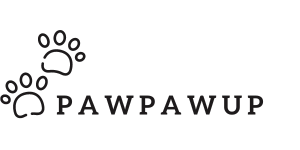Why Dogs Chew
Chewing is part of a dog's makeup. Pups get to know the world by using their mouths, and grown dogs keep it up to let out stress, fight off dull times, or look after their teeth. Dog behavior tells us that chewing isn't bad—it’s natural. But it can become a problem if a bored or upset dog starts to eat your table's leg or your sofa's edge.
It's normal to feel mad when another shoe or pillow gets chewed up. But, to stop this, it's not about being mad—it's about knowing why it happens and changing the behaviour. Dogs don’t chew to make us mad. They do it because it helps them. So, we need to handle that need in a better way.

Remove The Draw
Keeping your dog from chewing too much starts with checking their space. If a dog keeps finding the same old sock or shoe to chew on, look at what you leave out. A good first move is to put things they can’t have out of reach. Close doors or put fun but off-limits stuff high up. Until your dog learns new habits, keep managing their space to avoid slip-ups.
Change The Habit
Changing the habit is key, too. If a dog grabs something they shouldn’t, stay calm, step in, and offer something they can chew. This helps them learn what’s okay to chew and what’s not. A lot of dog toys are great and safe for chewing. Letting a dog chew the right thing can help them let out energy or calm down. Always being the same in what you let them chew and giving them a "good job" when they do right is important.
Use Play To Burn Energy
A lot of play can help use up energy. Dogs that chew a lot may not have enough to do. They get bored and start bad habits. Play that makes them run, pull, and fetch acts like what they'd do in the wild and uses up a lot of energy. The right toy can make play more fun and also help with training. Check out PawPawUp’s dog toy collection to find toys that suit every chewer’s need.
Don’t Punish
It’s tempting to get mad at a dog who rips up a pillow or ruins a rug corner, but yelling doesn’t show them the right thing to do. It just makes them scared of getting caught. Dogs can’t link punishment to what they did before unless you catch them right then. Operant conditioning shows that reinforcement is more effective than punishment. Yelling can make them more anxious, and anxious dogs chew more. Use kind words and show them what you like instead of getting mad for what you don’t.
Reward Well
Rewards don’t always need to be treats. For dogs that love to pull and bite, a tough toy can be the best prize. Let them have their favourite toy right after they make a good choice, like not chewing on furniture or picking the right thing to chew. This makes good links in their mind. Over time, this makes a habit of good choices that come with fun rewards.
Watch Out For Stress Signs
Another big part of handling bad chewing is knowing what makes your dog chew. Dogs chew when they’re worried, alone for too long, or if their day changes a lot. Giving them a regular day helps cut down on worry-based chewing. Play often, keep meals at the same time, and spend enough time with them to keep them calm.
Make Them Think More
If chewing goes on even with new habits and treats, think about how much your dog gets to use their brain. Dogs need things to do that make them think. Puzzle toys, training games, and tasks that need thought can do wonders. A smart toy doesn't just give them something to chew; it also makes them think.
Teething in Pups
Pups chew a lot as they grow new teeth. This time, their gums hurt, and they want to bite. Cold toys, bumpy rubber, and safe fabrics can help. Watch how hard and how long they chew to help them not start long-lasting bad habits.
Build Long-Term Habits
For grown dogs with set bad chewing habits, it takes patience and time to build new ones. You might need to teach them from scratch. Each time a dog picks the right thing to chew is a good step. Each fun play time that ends well (not a mess) helps build a new way.
Understand The Chew Message
Chewing is not just trouble; it’s a sign. It could mean, "I’m bored," or "I’m worried," or even "I need something to do." Listen to that and give them things to do to avoid harm and help your dog feel better. At PawPawUp, our dog toys are made for these needs to help you guide your dog to better habits through fun play and trust.
When we see bad chewing as just a natural need that lacks direction, answers get clearer. Dogs need to chew. And they also need to feel safe, happy, and seen. With the pet supplies, routine, and knowledge, even chew-loving dogs can have safe habits, make them happy, and be good for both pets and the home.
If you have a teething pup or are helping an older dog learn new ways, staying the same, being patient, and giving them ways to use their minds with toys can always help. Chewing may not stop, but with some direction, it can be good, checked, and healthy for everyone.

